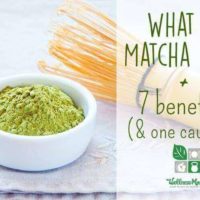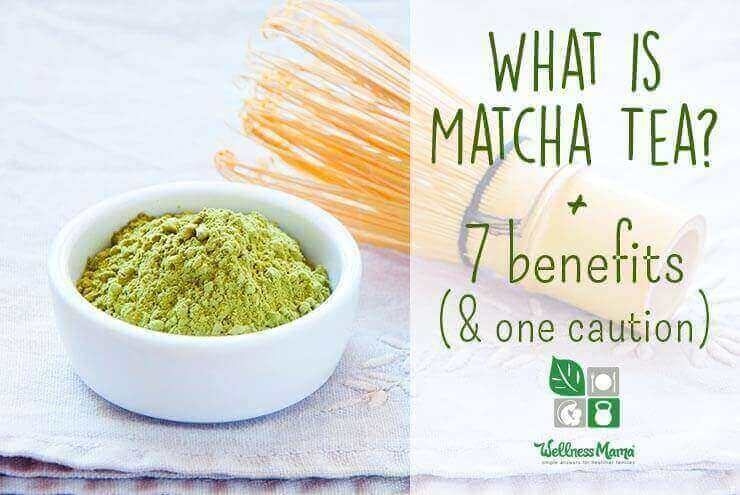Ever resisted a fad for a long time because you didn’t like it or it seemed frivolous only to try it later and discover that you had been missing out the whole time?
I have a list of things that I resisted to my own detriment (yoga pants and sushi top the list) but one that I’ve known and loved for years is Matcha Tea. I had a friend in high school who was from Japan and she introduced me to this amazing powdered green tea known as Matcha.
It has gained popularity lately, though many modern mentions of Matcha ignore the rich culture and traditional preparation that typically accompany matcha tea brewing.
What Is Matcha?
Matcha is a special type of powdered green tea that is grown and produced in Japan (in most cases). The green tea leaves are shaded from the sun for the last few weeks of their growth, increasing the chlorophyll content and creating a gorgeous green color. Then, the leaves are carefully ground with stone grinding wheels to produce a fine powder.
The powder can then be used to brew an antioxidant rich frothy green tea or in recipes like smoothies or baking. Unlike other types of teas, the green tea powder is not strained out before consuming, so you are consuming the entire leaf, making Matcha more potent than other tea varieties. In fact, only 1/2 tsp is needed to brew a traditional cup of Matcha.
History of Matcha
In the Tang Dynasty in China, green tea was powdered and dried into bricks for easy use. People could then break off a small piece of the dried tea brick and stir into hot water. This provided a shelf stable green tea that was easy to travel with.
In the 1100s, a Japanese monk brought the idea of powdered tea to Japan, and this eventually evolved into the traditional chanoyu ceremony. Though the tradition of drinking powdered green teas has lost popularity in China until recent years, the tradition has persisted in Japan. Though originally only royalty and Samurai warriors were given Matcha because it was so time consuming and expensive to produce, it is now a popular drink throughout Japan.
For Matcha, the best tea bushes are selected and shaded from the sun for 3 weeks before harvest. Then, the best leaves are selected and ground by hand to produce a fine, bright green powder.
Benefits of Matcha Green Tea
Energy + Calm
Matcha tea is unique because the process of shading and harvesting increases the content of L-Theanine, an amino acid that helps balance the caffeine. While matcha may contain the same caffeine as other types of tea, the L-Theanine is known to create calmness without drowsiness.
Antioxidants
Another benefit to Matcha is the high concentration of antioxidants. One study found that Matcha has 137 times the polyphenols (notably, epigallocatechin gallate (EGCG)) than regular green tea. (1) In fact, this type of green tea contains over 60x the antioxidants of spinach and 7x the antioxidants of high quality dark chocolate.
There is some evidence that these polyphenols may have a protective effect against some types of cancer.
Weight Loss
EGCG, found in high concentrations in Matcha, has been shown to increase the rate of burning stored fat as energy, as well as decreasing the formation of new fat cells. Other studies have shown that the catechins in Matcha increase the body’s rate of calorie burning each day and offered additional fat burning benefit during exercise.
Healthy Heart
A 2011 study in the American Journal of Clinical Nutrition showed that the catechins in green tea had a significant effect on lowering LDL cholesterol. A 2013 Cochrane review also showed that regular green tea consumption was associated with lower blood pressure and an decreased risk of stroke.
Brain Power
The L-Theanine in green tea is known to help stimulate alpha brain waves. These waves are known for their ability to help increase focus and concentration.
Chlorophyll Source
The process of shading the Matcha leaves creates an increased amount of Chlorophyll, which some preliminary research has shown may help the body eliminate heavy metals and other harmful buildup. Research is still lacking in this area, but many alternative doctors recommend Chlorophyll for this purpose.
Skin Health
The same antioxidants that make green tea protective, including epigallocatechin gallate (EGCG), may also help support skin health by reducing inflammation and free radicals that accelerate skin aging. This green tea facemask is a great example of that.
All That Glitters…
Is not gold, or green, as the case may be. Matcha has some amazing benefits, but one important caution and potential downside: lead.
All green teas, even organically grown ones, contain trace amounts of lead and fluoride. When brewed as traditional green tea, the leaves are removed, and most of the lead (and some of the fluoride) is removed with the leaves.
With Matcha, since the whole leaf is consumed, there is a higher concentration of lead. From everything I’ve read, this is not a reason to avoid this type of tea, since the levels are still low, but I would exercise more caution when pregnant for this reason.
Pique Tea offers an amazing Matcha tea, that is the only Matcha to be triple screened for any toxins and is free of heavy metals and fluoride, pesticides, toxic mold and radioactive isotopes.
How to Brew Matcha Green Tea
Though Matcha can cost $4 or more in a cafe, you can make it inexpensively at home. We enjoy Matcha as a treat about once a week, and I’ve also enjoyed experimenting with adding it to foods for color. Though in Japan, a tea ceremony is an elaborate practice that involves special cups, tea pots and bowls, there is a simplified process that you can use at home.
There are two ways to brew, as usucha or koicha. Usucha is a thin tea, while koicha is a thicker tea.
Needed Equipment:
- A bamboo whisk and spoon (not absolutely necessary, but creates a much smoother and frothier drink than a regular whisk) TIP: in a pinch, use a blender.
- Fine mesh strainer or sifter
- A glass bowl for whisking
- Small cups for drinking tea
I use the same equipment in my matcha green tea latte recipe (it even has an iced option).

Matcha Green Tea Recipe
Servings
Ingredients
- 1 tsp matcha powder
- 1 cup water (at 175°F)
Instructions
- Sift the powder into the glass bowl using a fine mesh strainer or sifter.
- Slowly add the hot water.
- Whisk with the bamboo whisk in a “w” shape until frothy and well mixed.
- Drink immediately.
Notes
Ever used Matcha? What is the most unique way you’ve used it?


Leave a Reply